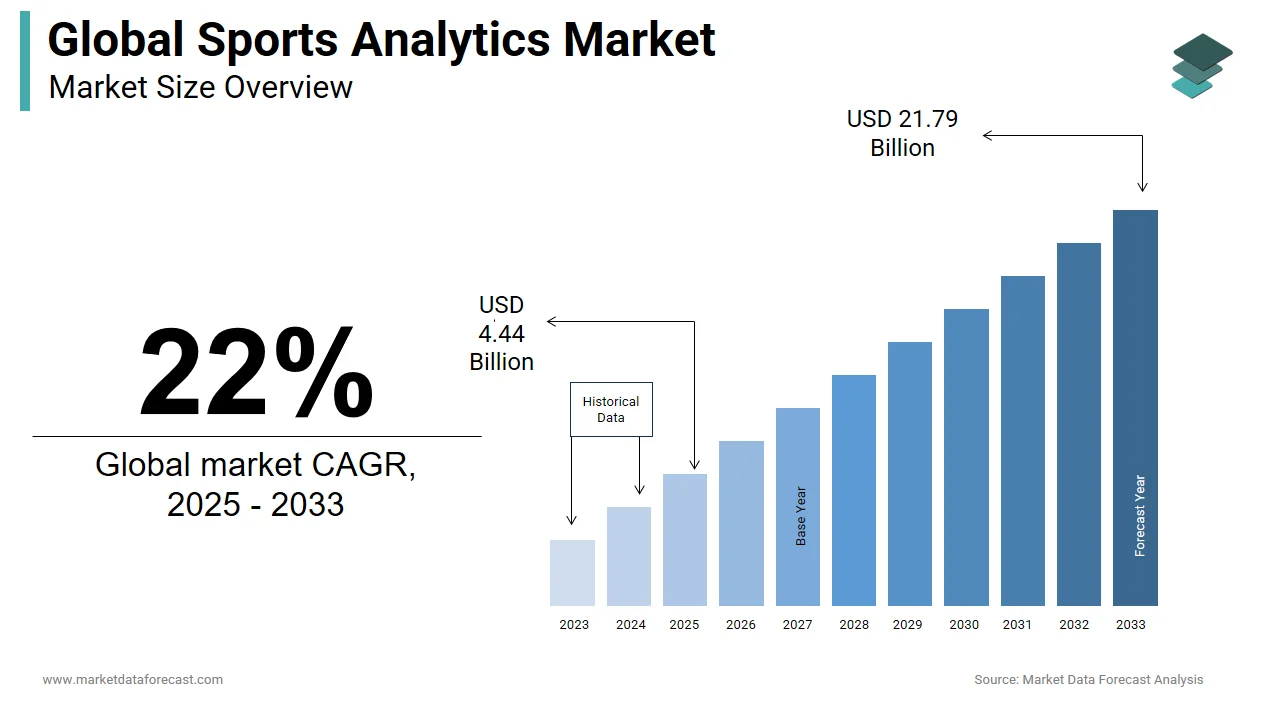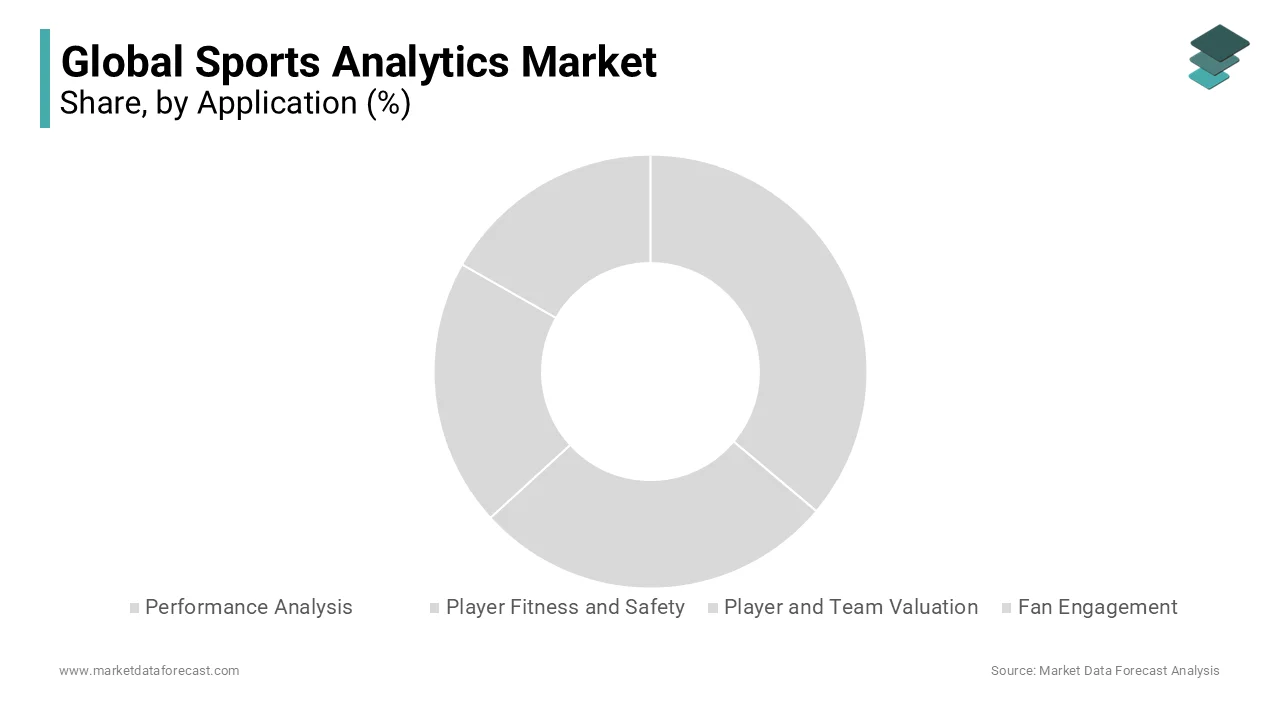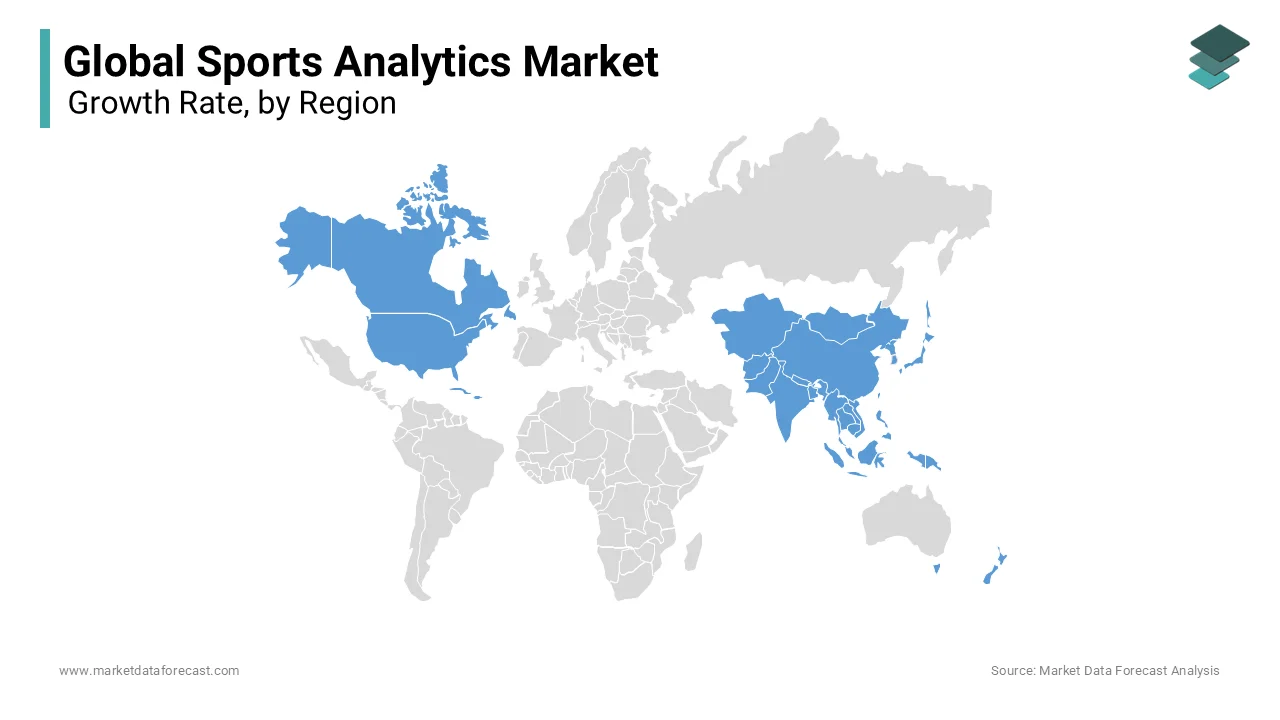Global Sports Analytics Market Size, Share, Trends, & Growth Forecast Report by Sports Type (Individual and Team), Application (Performance Analysis, Player Fitness and Safety, Player and Team Valuation, and Fan Engagement), Deployment Model (Cloud and On-Premise), and Region (North America, Europe, Asia-Pacific, Latin America, Middle East and Africa), Industry Analysis From 2025 To 2033.
Global Sports Analytics Market Size
The global sports analytics market was worth USD 3.64 billion in 2024. The global market is expected to reach USD 4.44 billion in 2025 and USD 21.79 billion by 2033, growing at a CAGR of 22% during the forecast period.

The sports analysis market provides access to team management to obtain information and data on the performance of any player and other teams, which is very useful during games or sessions. Drive. Sports analytics also helps consumers get more information and data about fans and their social responses to players and the team, helping them understand a fan's affection and encouraging them to spend more on sports action. Another important aspect of sports analysis is the possibility of obtaining a common vision for each player and the general team of a club by combining training, match, and injury data scattered throughout the organization. This improves communication between all the candidates on the jury. Additionally, players and team managers can talk about each player's game on a portable platform supported by sports analytics. With the surge in demand for player monitoring and tracking information, the number of portable devices in the sports industry is on the rise. As a result, a significant amount of player and team data is generated, which is used to obtain information about player performance and fitness variables such as heart rate, speed, and acceleration.
MARKET TRENDS
Soccer only accounts for the majority of the sports analysis market due to increased attendance at soccer leagues such as the UEFA Champions League, MLS, EPL, and ISL. According to UEFA (the governing body of European soccer), a 1.5% year-on-year increase in the number of spectators in national and European matches was noted, with more than 170 million people attending the matches in 2015-2016.
In addition, teams and clubs collaborating with analytical companies are an important trend in the market. For example, many soccer leagues and clubs have collaborated with Opta, the leading provider of sports data on soccer. Opta's analysis can determine the action of each player in a specific area on the field, regardless of whether a player has the ball or not.
Modifications in the environment and higher adoption rates of technologies are raising the usage of sports analytics solutions in North America. As businesses focus on reducing maintenance and upgrade costs, the demand for cloud-delivered software increases as cloud-based solutions deliver benefits such as low cost, rapid scalability, easy access, and 24/7 service.
The leagues are the main users of sports analysis solutions. The baseball and basketball leagues have the highest adoption rate of these solutions, especially for player selection.
Superclubs are recognized for their remarkable track record of success, which has fueled the value of their brand and their fan base, attracting star players from across the region and thus stimulating investment and sponsorship. These elite clubs see analysis as the next frontier in football. In addition, the growing competitive nature, the need to improve decision-making to gain an advantage over its competitors, the need for strategy implementation, and the influence of social media have led to exponential adoption of the analysis.
MARKET DRIVERS
The marketing/sales segment is expected to gain a significant share of the global sports analytics market due to factors such as the adoption of this software for various promotional and marketing activities.
However, the analysis and assessment of player health is expected to increase at a higher rate during the forecast period due to the increased need to improve player performance and keep them away from various injuries. Sports teams can use intelligent sports analytics to help monitor any association. While the first users prove that analysis makes the difference between losing and winning, all managers, teams, and players in the vision team must adopt solutions that create market development opportunities.
The main factors driving the growth of the sports analysis market in this region include the increase in various initiatives of the sports club to improve the performance of their teams and increase their fan base and revenue opportunities. However, Asia-Pacific is expected to experience the highest growth rate over the forecast period due to the increase in the number of new sports organizations and increased investment in sports technology by various public and private companies.
REPORT COVERAGE
|
REPORT METRIC |
DETAILS |
|
Market Size Available |
2024 to 2033 |
|
Base Year |
2024 |
|
Forecast Period |
2025 to 2033 |
|
CAGR |
22% |
|
Segments Covered |
By Application, Type of Sport, Deployment Mode, and Region |
|
Various Analyses Covered |
Global, Regional & Country Level Analysis, Segment-Level Analysis, DROC, PESTLE Analysis, Porter’s Five Forces Analysis, Competitive Landscape, Analyst Overview on Investment Opportunities |
|
Regions Covered |
North America, Europe, APAC, Latin America, Middle East & Africa |
|
Market Leaders Profiled |
CAE Inc., Moog Inc., Siemens AG, Dassault Systems SA, Laerdal Medical AS, Human Solutions GmbH, Bosch Rexroth AG, Exponent Inc., Santos Human Inc., and Thoroughbred Technologies (Pty) Ltd, and Others. |
SEMENTAL ANALYSIS
By Application

REGIONAL ANALYSIS

In terms of geographic provinces, the EMEA will be the main source of revenue for the sports analysis market in the coming years. The world market for sports analysis in the EMEA region is strongly influenced by the football leagues of the European regions. The soccer leagues of Germany, England, Italy, Spain, and France are five of the most productive leagues in the world.
In terms of regions, North America accounts for a significant portion of the worldwide sports analytics market, as the region is home to several leading players and competitors. The adoption of sports analytics by teams such as the NBA and MLB in this region to optimize revenue and improve game performance is also expected to fuel the sports analytics market in the region. The growing need to retain fans in sports organizations supplements the sports analytics market in the locale. With the help of sports analysis, the North American Prospects Hockey League (NAHL) urges fans to stay up-to-date and thereby increase their income opportunities.
KEY MARKET PARTICIPANTS
Some of the notable companies dominating the global sports analytics market profiled in this report are CAE Inc., Moog Inc., Siemens AG, Dassault Systems SA, Laerdal Medical AS, Human Solutions GmbH, Bosch Rexroth AG, Exponent Inc., Santos Human Inc., and Thoroughbred Technologies (Pty) Ltd, and Others.
RECENT MARKET HAPPENINGS
- March 2018: Zenedge, Oracle, is expected to acquire a new technology security company to strengthen its security in the cloud. To date, Zenedge has raised USD 13.7 million (EUR 9.7 million).
- In March 2019, IBM signed an agreement with the Columbus Crew Soccer Club to provide a digital experience in its new phase, scheduled for 2021. As part of this partnership, IBM Services and the digital agency IBM iX will provide a roadmap to involve fans and design the environment for a 430,000-square-foot, 20,000-seat stadium, and 30 suites.
- In 2019, the Local Organizing Committee (LOC) of the Abu Dhabi Special Olympics World Games made a deal with the SAS Institute, which provides its artificial intelligence and machine learning technologies to athletes to analyze traditional and non-traditional data for information, thereby improving performance worldwide.
- In July 2019, STATS, a London-based sports media company owned by Access Industries, combined with Europe-based PERFORM to provide AI-based data, sports news, and video content to sports media, teams, and elegant leagueCAE Inc., Moog Inc., Siemens AG, Dassault Systems SA, Laerdal Medical AS, Human Solutions GmbH, Bosch Rexroth AG, Exponent Inc., Santos Human Inc., and Thoroughbred Technologies (Pty) Ltd, and Others.s and providers to understand the complexities of games.
MARKET SEGMENTATION
This research report on the global sports analytics market has been segmented and sub-segmented based on the application, type of sport, deployment mode, and region.
By Application
- Performance Analysis
- Player Fitness and Safety
- Player and Team Valuation
- Fan Engagement
By Type of Sport
- Individual
- Team
By Deployment Mode
- Cloud
- On-Premises
By Region
- North America
- Europe
- Asia Pacific
- Latin America
- Middle East & Africa
Frequently Asked Questions
How are sports organizations leveraging analytics for fan engagement?
Sports organizations are increasingly using analytics to enhance fan engagement through personalized experiences. By analyzing fan behavior, preferences, and demographics, teams can tailor marketing campaigns, offer targeted promotions, and develop interactive content, fostering stronger connections with their fan base.
How is the adoption of sports analytics impacting player performance?
Sports analytics has revolutionized player performance by providing valuable insights derived from data analysis. Athletes and teams utilize analytics to optimize training regimes, identify strengths and weaknesses, and make strategic decisions during games, ultimately enhancing overall performance.
How is artificial intelligence (AI) influencing sports analytics?
AI is playing a transformative role in sports analytics by enabling predictive modeling, automated insights generation, and real-time decision support systems. Machine learning algorithms analyze vast amounts of data to forecast player performance, injury risk, and game outcomes, empowering teams with valuable strategic advantages.
What future trends can we expect in the sports analytics market?
The future of sports analytics will likely witness advancements in augmented reality (AR) training simulations, virtual coaching platforms, and the integration of IoT devices for real-time performance monitoring. Additionally, the emergence of blockchain technology may revolutionize player contracts, ticketing, and fan engagement models within the sports industry.
Related Reports
Access the study in MULTIPLE FORMATS
Purchase options starting from $ 2500
Didn’t find what you’re looking for?
TALK TO OUR ANALYST TEAM
Need something within your budget?
NO WORRIES! WE GOT YOU COVERED!
Call us on: +1 888 702 9696 (U.S Toll Free)
Write to us: [email protected]